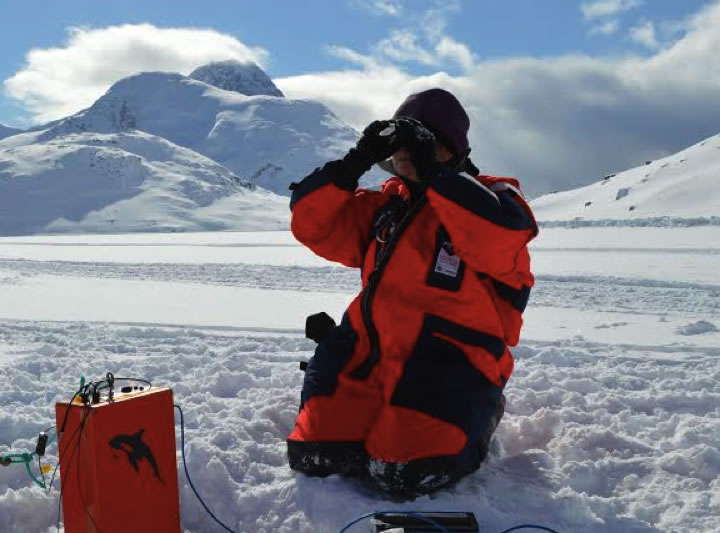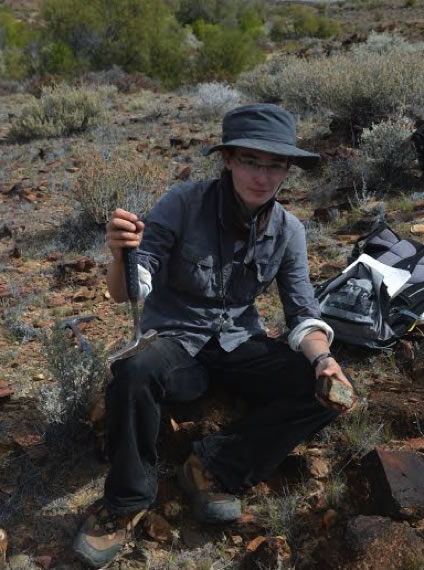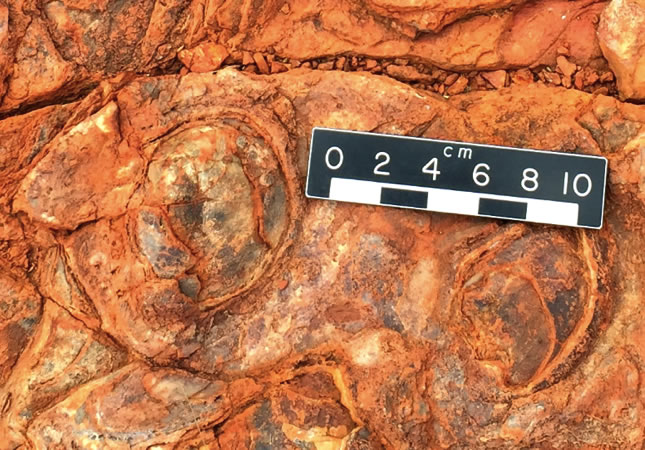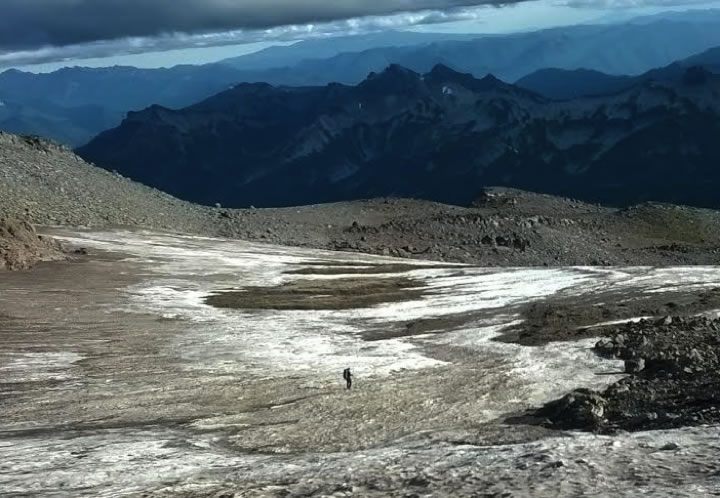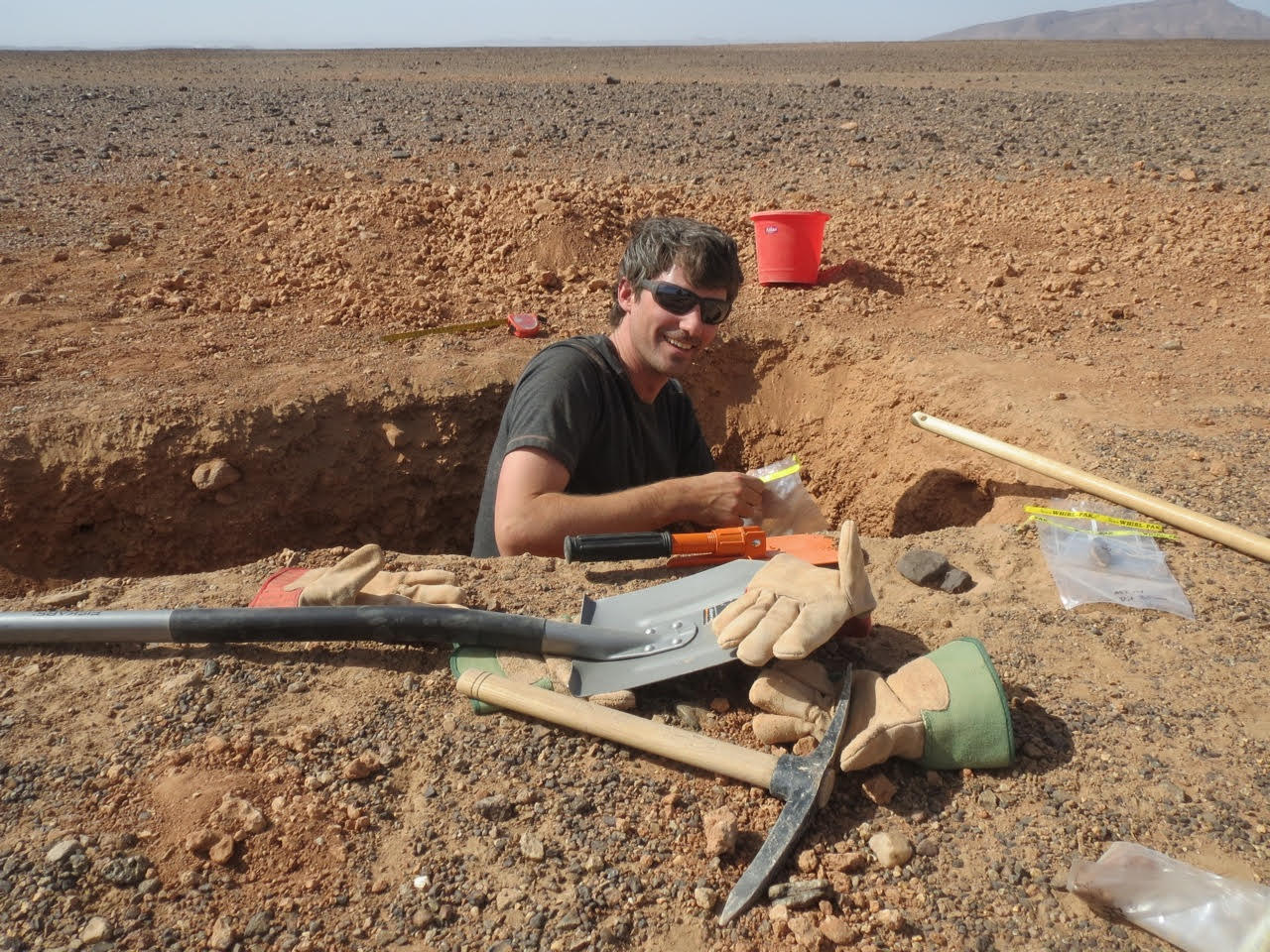 |
|
|
Fall 2015 Where in the World are our Astrobiologists? UW astrobiologists traveled to many places in the last year including Iceland, Australia, and Sweden! Read on to find out who went where... Joshua Krissansen-Totton, Paul Kitner, Steven Sholes and Michael Kipp went to Iceland for the Nordic Astrobiology Summer School. Elena Amador also traveled there as a TA. The theme of the school was "Water, Ice, and the Origin of Life in the Universe.” Below, the photo shows students sampling microbes on the Sólheimajökull glacier. The black material on the image of the glacier below is ash from the Eyjafjallajökull eruption. The goal of the fieldwork was to measure ATP in Mars analog environments to see if it would be a viable biomarker to be used on future life detection missions. In addition to the glacier, they sampled old lava fields on the island of Heimaey off the southern coast of Iceland because they are arid and nutrient-poor.
Above: Students on the Sólheimajökull glacier.
Above: UWAB students (back) Michael Kipp, Steven Sholes, Joshua Krissansen-Totton. (front) Elena Amador, Paul Kitner. Gordon Showalter went on a field expedition with Professor Jody Deming in March 2015 to Nuuk, Greenland to field test a digital holographic microscope on a Caltech-led project called SHAMU (submersible, holographic astrobiology microscope with ultra-resolution). SHAMU seeks to use holographic observation of bacterial swimming as an unambiguous biosignature in extreme environments, from the Arctic to Enceladus. In Greenland they confirmed the DHM's ability to see bacterial swimming in one of the coldest inhabited environments on Earth: sea ice brine.
Above: UW Professor Jody Deming measuring sea ice brine salinity, with the microscope in the foreground
Above: Lab manager Shelly Carpenter, Greenland guide Ivali Lennert, and Gordon Showalter drill ice cores
Above: The whole team in Greenland. Professor Jim Hermanson spent eight months in 2015 in residence in the Department of Mechanics at the Royal Institute of Technology (KTH) in Stockholm, Sweden. During this time he collaborated with Professor Gustav Amberg in the numerical modeling of near-critical droplet behavior in turbulent flow, and with Professor Nicholas Apazidis in an experimental study of the interaction of shock waves with two-dimensional liquid droplets. Prof. Hermanson was very impressed with the KTH, Stockholm, and life in Sweden in general. In conjunction with his new KTH colleagues, he is exploring the possibilities of starting a new exchange program between UW and the KTH, to hopefully give other members of the UW aerospace and astronautics community the opportunity to work at a top technical university in Scandinavia and experience firsthand the wonderful technology, culture, people, and life in Sweden.
Above: A beautiful view in Sweden. Professor Roger Buick and NPP Postdoc Eva Stükeen (a former UWAB graduate student) went on a 3 week field trip in September 2015 to the Flinders Ranges in outback Australia to collect Neoproterozoic rocks for Eva’s postdoc project on the biogeochemical evolution of non-marine environments through time.
Above: Roger Buick in an outback town
Above: Eva Stüeken collecting rock samples.
Above: halite (rock salt) casts
Above: A view of the living stromatolites (the dark objects) in Shark Bay. The brown coating on these stromatolites is scytonemin, a UV-protectant pigment. Scytonemin conveys protection to short wavelengths of UV radiation blocked in the modern atmosphere by ozone, suggesting it may have evolved before the rise of the ozone layer 2.5 billion years ago.
Above: Giada Arney and 2.7 billion year old fossilized stromatolites. Tilted rocks show a cross-section of the layers of these lithified microbial mats.
Above: A top-down view of 3.5 billion year old fossilized stromatolites at the "Buick Locality", named after UW Professor Roger Buick! Anna Simpson went to the Muir snowfields in September 2015, taking samples from under the edge of the snowpack for RNA extraction. The permanent snowpack on the lower snowfields is at the lowest level it's been for several decades, so she is able to sample soil that has been under snowpack for many years. Anna will analyze the samples to determine what is living there – she doesn't know what she will find yet, but she expects it should be interesting!
Above: a view of the snowfield
Above: a view of the snowfield close to sunset Field Sites in Russia, Morocco and Spain Former UWAB alum and postdoc Mark Claire (Astronomy, 2008) visited several field sites last year in Russia, Morocco, and Spain to study geochemical evidence of the ancient Earth environment, a landing site of a Mars meteorite, and to teach undergraduates
Above: Mark with geochemist fiancé Dr. Aubrey Zerkle standing in NE Russia on Jatulian red beds which show the first "classic" geological evidence of the rise of oxygen in Earth's atmosphere.
Above: Mark doing fieldwork at the landing site of the Tissint Mars meteorite in SW Morocco.
Above: Second year undergraduates led by Mark on a visit to Rio Tinto in Spain. |
|


